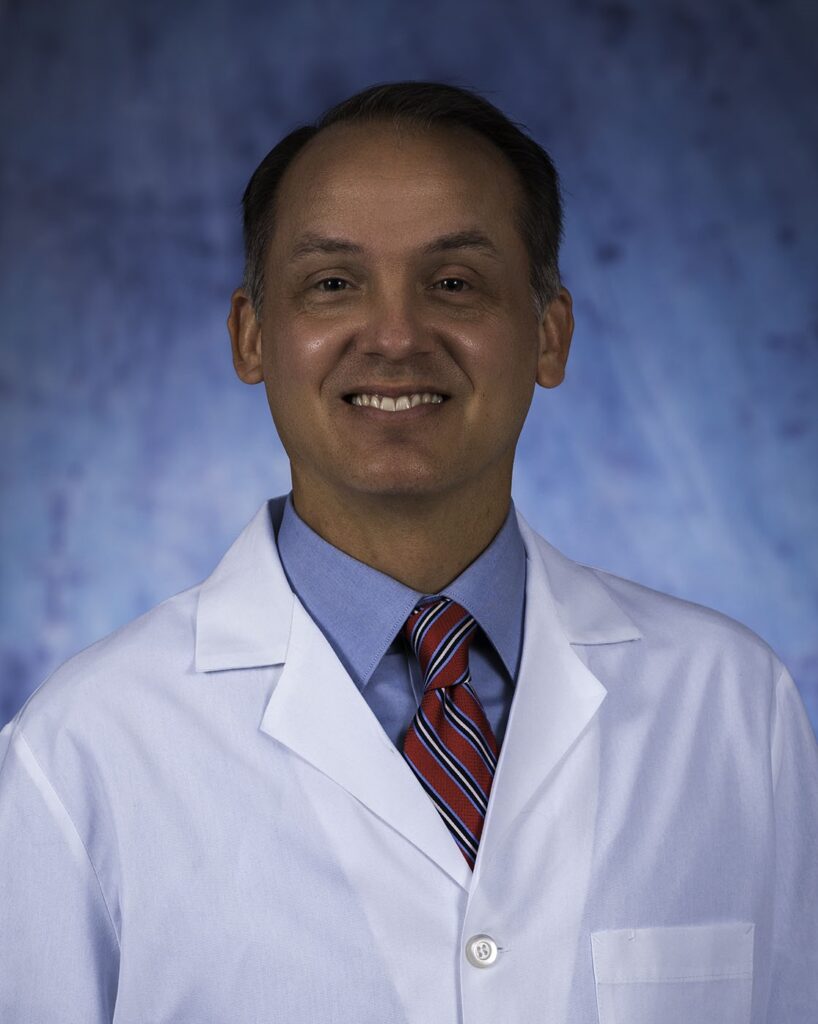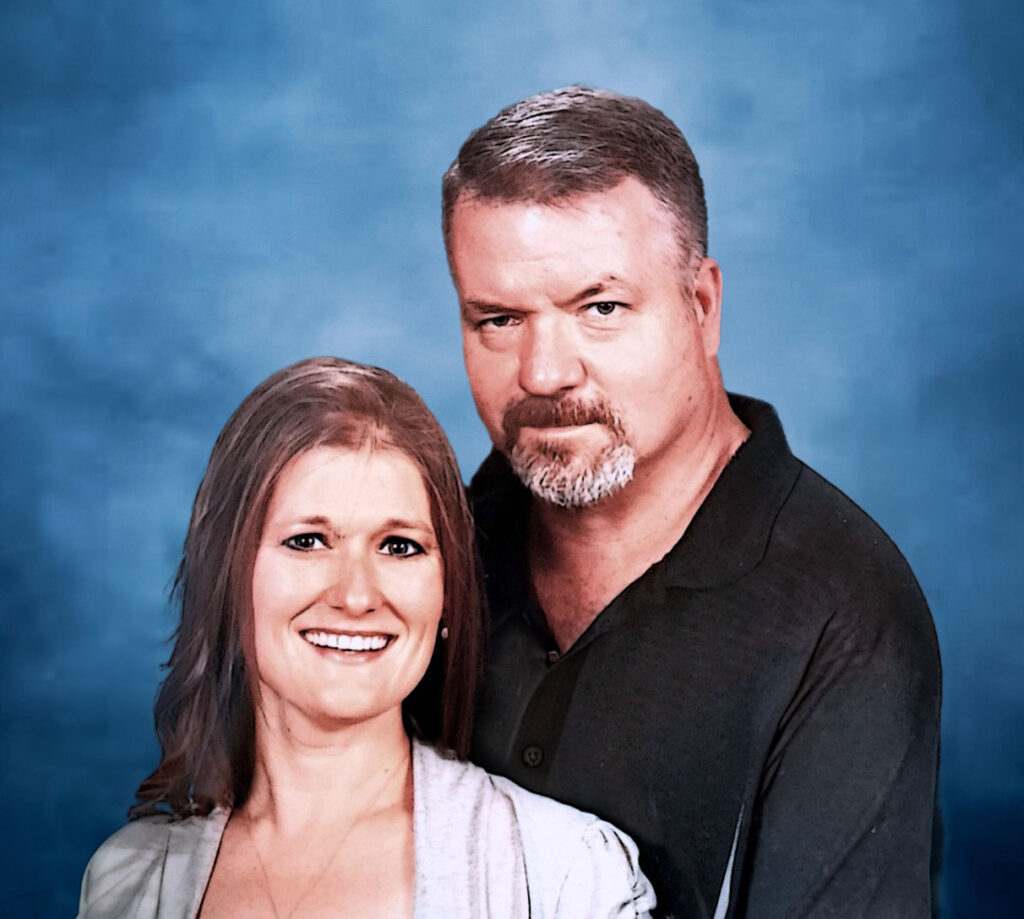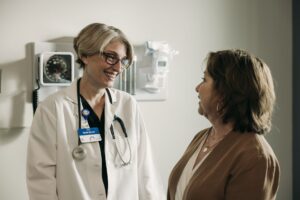Spine Surgery Helps Knoxville Man Feel “100 Percent Better”

“I Got My Life Back,” Patient Says After Surgery at Fort Sanders Regional
Jason Trahan, 54, of Knoxville, enjoys traveling, the outdoors and spending time with his wife, Laura, and two children. Before his spine surgery, however, those activities were limited. He experienced back pain that worsened over time until he couldn’t move without pain.
“I have been extremely blessed in my life,” Trahan said. “But my back pain was so bad, my quality of life was just gone. I got to the point where I did not want to leave the house. Every time I stood up, I had shooting pain in my back.”
Trahan led an active lifestyle before his back pain. He rode a bicycle for exercise, until one day his back completely gave out. He sought care from several resources before receiving his diagnosis.
Diagnosis: Spinal Stenosis
Trahan visited a chiropractor, a physical therapist and a pain management doctor. He tried steroids, along with other medicinal and physical therapies. “I even tried to change my diet, and that didn’t work,” he said. “I did everything I was told, and I still had an instant shooting pain if I moved. It felt like I was hunched over all the time.”
Finally, he had an MRI and was diagnosed with severe spinal stenosis. He was referred to Josh Miller, MD, neurosurgeon at Fort Sanders Regional Medical Center.

“Mr. Trahan experienced several years of progressive low back pain with intermittent leg pain. He was diagnosed with lumbar spinal stenosis at level one,” Dr. Miller said. “Patients who have spinal stenosis experience symptoms when they stand or walk because the nerves get squeezed.”
Dr. Miller explained, “Spinal stenosis can be from different causes. It’s a degenerative change that affects people mostly in their 60s, but we see cases of people in their 40s and 50s. The most common cause is the thickening of the ligament around the spinal canal, which can thicken with age and over time.”
Trahan described his first encounters with Dr. Miller. “I walked into the office and was immediately impressed with the professional courtesy that everyone had, and their eagerness to help,” Trahan recalled. “Dr. Miller got all my history and background info, and I felt like a person instead of just another number. Chris in his office was wonderful, too. I really couldn’t be more pleased.”
Dr. Miller evaluated Trahan and discussed next steps. “I felt comfortable proceeding with spine surgery, and Dr. Miller explained everything – the procedure, the healing process, risks and benefits, everything,” Trahan said. “He was confident I’d be back on my feet quickly, and I was.”
Laminectomy Spine Surgery Relieves Patient’s Back Pain
At Fort Sanders Regional Medical Center in Knoxville, Trahan underwent a spine surgery procedure called a laminectomy at the L4/5 level. Laminectomy involves removing the back part of the bone and ligament around the spinal canal to make more room for the nerves.
“This procedure is very common,” said Dr. Miller. “If patients don’t find relief from steroids or therapy, a laminectomy is the most common way to treat lumbar spinal stenosis. The procedure only takes about 45 minutes of operating time and involves one small incision between 1-2 inches. Most patients can tell a difference in a matter of days and have recovered from the surgical pain within a week.”

Trahan said the spine surgery team at Fort Sanders Regional treated him with kindness and compassion. “I woke up in post-op and became conscious and could immediately tell it was different. I got an instant glimmer of hope, and it brought me to tears.”
Trahan described spending time with his 13-year-old daughter and 11-year-old boy, who are both athletes. “I want to be able to throw the ball with my kids and go to their events. I want to live my life without pain, and now I can do that — I’m not exaggerating when I say Dr. Miller gave me my life back.”
When to See a Doctor About Back Pain
Dr. Miller advised people who are experiencing back pain to start with physical therapy or their primary care doctor. “When you are referred to a neurosurgeon with low back pain, we start with conservative treatment. You should see a neurosurgeon sooner if you’re having leg pain associated with back pain, if back pain worsens over time, or if you are not gaining relief with therapies.”
More About Spine Surgery
Dr. Miller added, “Many types of spine surgery are now done safely with low risk of complications. People think they will be hospitalized for days, but most surgeries can be outpatient, where patients go home the same day or the next day. Most of what we do is very straightforward with high success rates and minimal downtime.”
For more information neurosurgery at Fort Sanders Regiona, visit our surgery services page.

Covenant Health
Headquartered in Knoxville, Tennessee, Covenant Health is a not-for-profit, community-owned, healthcare enterprise committed to providing the right care at the right time and place. Covenant Health is the area’s largest employer and has more than 11,000 compassionate caregivers, expert clinicians, and dedicated employees and volunteers.


